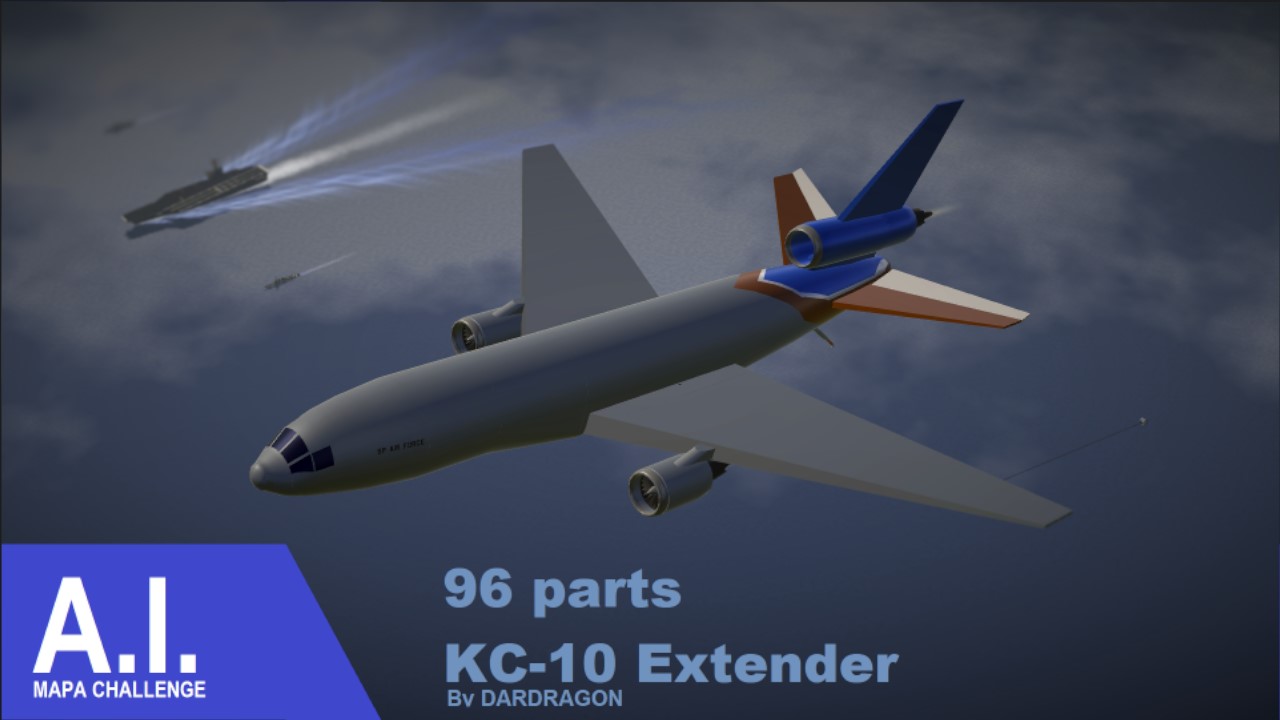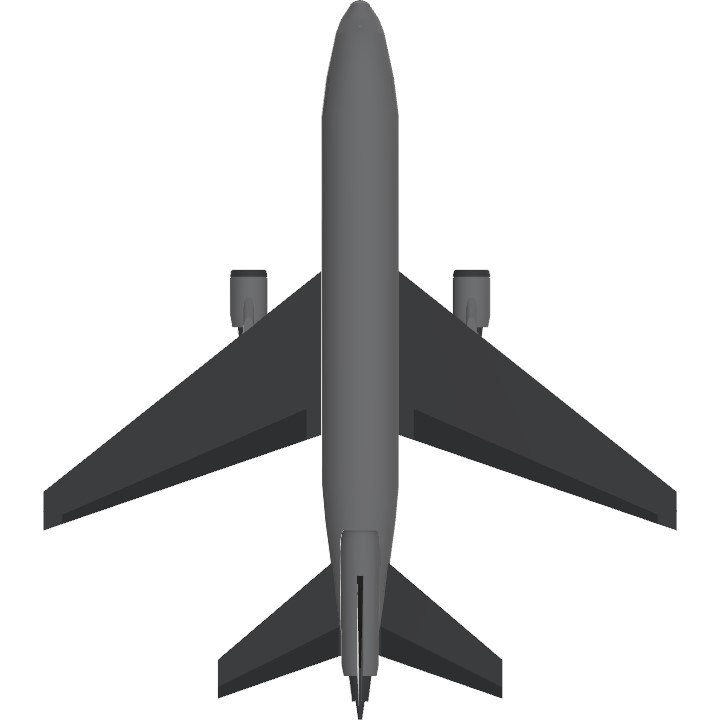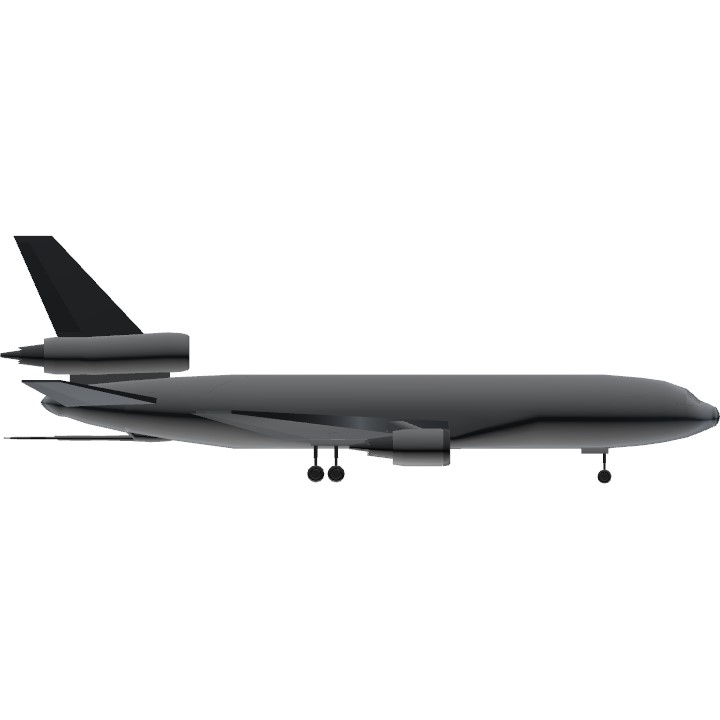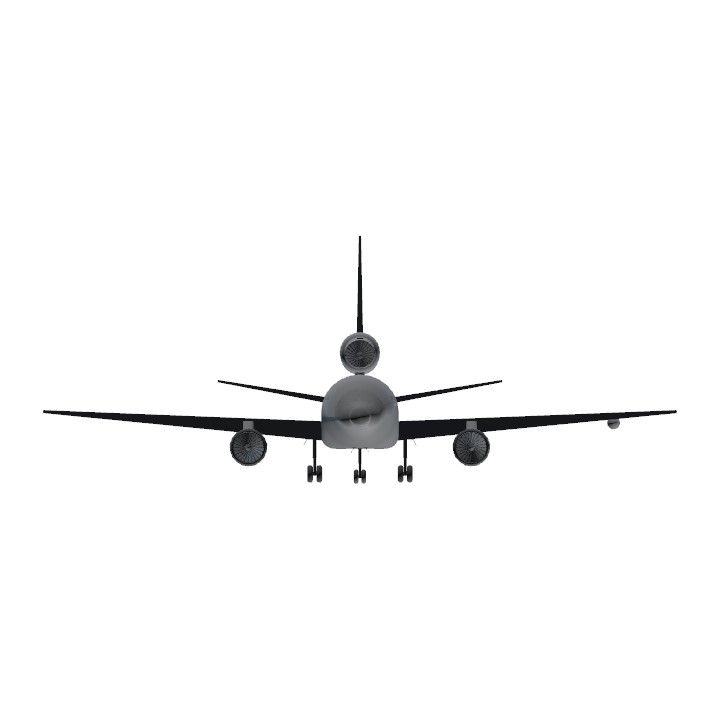Description
The McDonnell Douglas KC-10 Extender is an American aerial refueling tanker aircraft operated by the United States Air Force (USAF). A military version of the three-engine DC-10 airliner, the KC-10 was developed from the Advanced Tanker Cargo Aircraft Program. It incorporates military-specific equipment for its primary roles of transport and aerial refueling. It was developed to supplement the KC-135 Stratotanker following experiences in Southeast Asia and the Middle East. The KC-10 was the second McDonnell Douglas transport aircraft to be selected by the Air Force following the C-9. A total of 60 KC-10s were produced for the USAF. The Royal Netherlands Air Force operated two similar tankers designated KDC-10 that were converted from DC-10s.
The KC-10 plays a key role in the mobilization of US military assets, taking part in overseas operations far from home. These aircraft performed airlift and aerial refueling during the 1986 bombing of Libya (Operation Eldorado Canyon), the 1990–91 Gulf War with Iraq (Operations Desert Shield and Desert Storm), the NATO bombing of Yugoslavia (Operation Allied Force), War in Afghanistan (Operation Enduring Freedom), and Iraq War (Operations Iraqi Freedom and New Dawn).
The U.S. Air Force has started retiring the KC-10, and it is expected that by September 2024 all operations of the "Big Sexy" will cease.
Specifications
General characteristics
Crew: 4
Length: 181 ft 7 in (55.35 m)
Wingspan: 165 ft 4.5 in (50.406 m)
Height: 58 ft 1 in (17.70 m)
Empty weight: 241,027 lb (109,328 kg)
Gross weight: 590,000 lb (267,619 kg)
Max takeoff weight: 590,000 lb (267,619 kg)
Fuel capacity: 365,000 lb (165,561 kg)
Powerplant: 3 x General Electric F103 (GE CF6-50C2) turbofan engines, 52,500 lbf (234 kN) thrust each
Performance
Maximum speed:
- 538 mph (866 km/h, 468 kn)
Service ceiling:
- 42,000 ft (13,000 m)
Controls
AG8: AI mode(turn off if you plan to fly it yourself)
!!IMPORTANT!!Primary cockpit/flight computer should be in the exact same place as the fuel probe for the boom to work properly

just copy-paste the x, y, and z coordinates of the fuel probe onto the cockpit and shrink it. You can hide the probe and cockpit in the fuselage, just make sure all parts around the probe have collisions turned off(not the probe itself though. Keep collision on for the probe!)
Features
- Tanker mode(lock onto it or spawn it as aggresive, and it will try to close to 8km, then maintain 15,000ft and a 5 degree bank to the left at Mach 0.8)
- Working flying boom(works with AI!)
- Working belly guide lights!
- Cool landing stuff(try it out :) )
- Can land itself(when spawned in as AI)
Gallery
Flying Boom Refueling

Guide Lights


Note:
If the USAF don't want it, then we'll take it! SP Air Force Livery(I guess)!! I haven't done extensive testing on the boom, I've basically only tested it on a modified version of the Wasp, so I'm not sure if it will work for your aircraft. Also, not quite sure if the flight model is correct. I dunno, this was supposed to be a simple build, to relax from my unnecessarily complex stuff, and I don't know how I managed to make it complicated. So all the complex features might not work properly since I did not bother extensively testing it. It's still cool though. Also, the flying boom works using a basic "point-at" FT code I yoinked from a certain ground vehicle of mine, and the boom just extends based on target distance. Not really that complicated, but it was a pain to get working properly. Also also, cockpit looks like that because I wanted to keep it smooth and at the same time use less parts, sooo let's just say this is the SP version of the KC-10
Specifications
Spotlights
- TarikArkswagen 1.2 years ago
- Bryan5 2.1 years ago
- WinsWings 2.1 years ago
- Kendog84 1.6 years ago
- MAPA 2.1 years ago
General Characteristics
- Predecessor MAPA Challenge [CLOSED]
- Created On Windows
- Wingspan 160.8ft (49.0m)
- Length 182.8ft (55.7m)
- Height 62.9ft (19.2m)
- Empty Weight 248,214lbs (112,588kg)
- Loaded Weight 590,090lbs (267,660kg)
Performance
- Power/Weight Ratio 0.479
- Wing Loading 288.8lbs/ft2 (1,410.0kg/m2)
- Wing Area 2,043.2ft2 (189.8m2)
- Drag Points 27766
Parts
- Number of Parts 96
- Control Surfaces 9
- Performance Cost 648





@DarDragon i understand it’s been literal months but is there any way for you to post that wasp? even just as unlisted
@OkaNieba Sure!
t o n k e r
Nice Tanker !
May I Borrow Your Flying Boom And Guide Lights ?
Nice